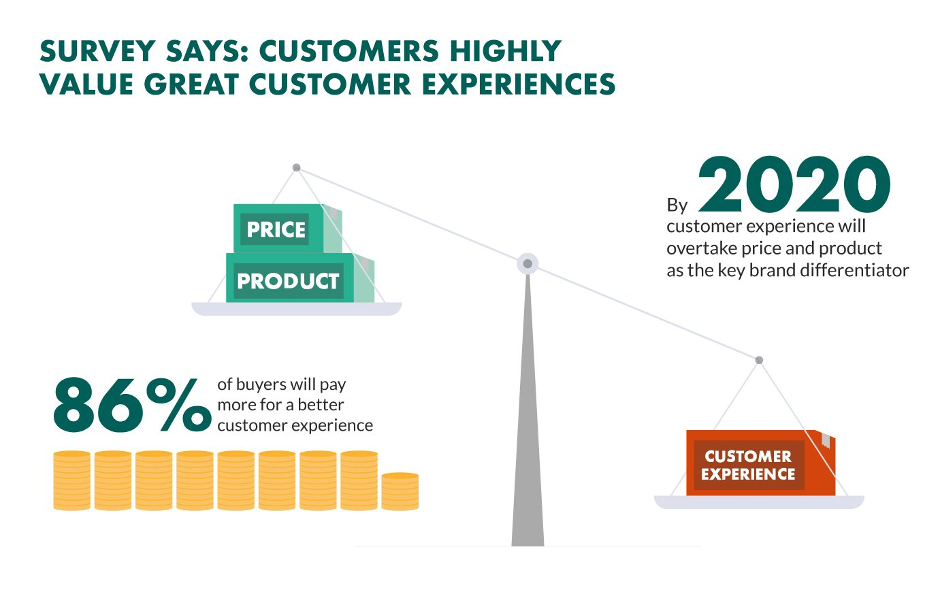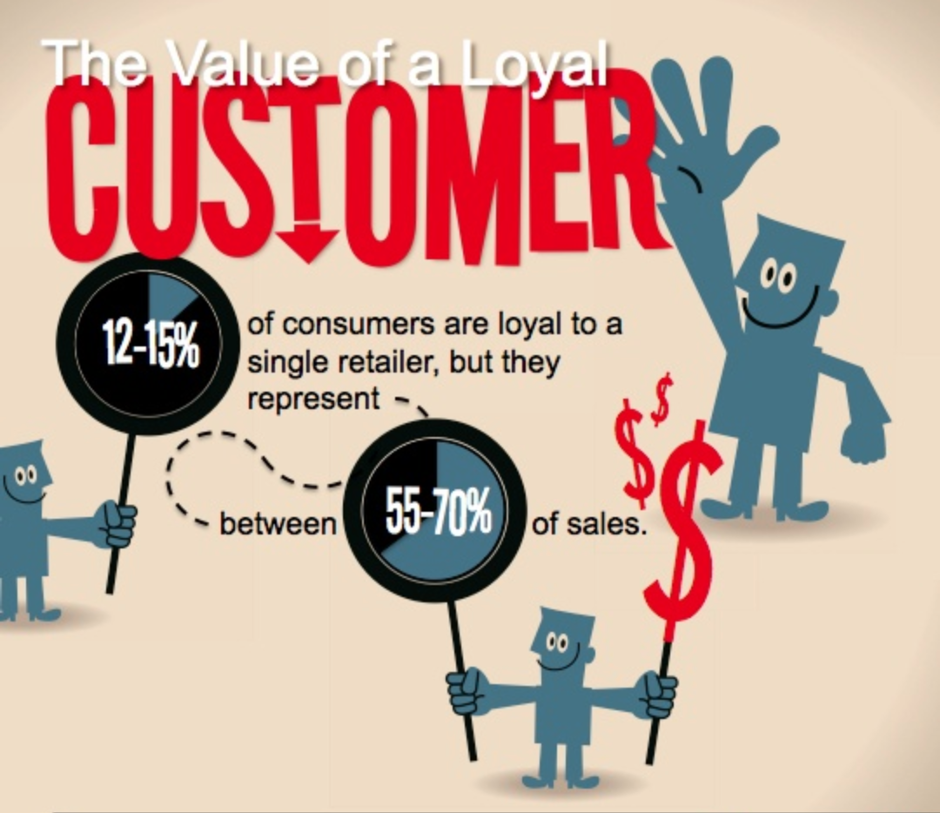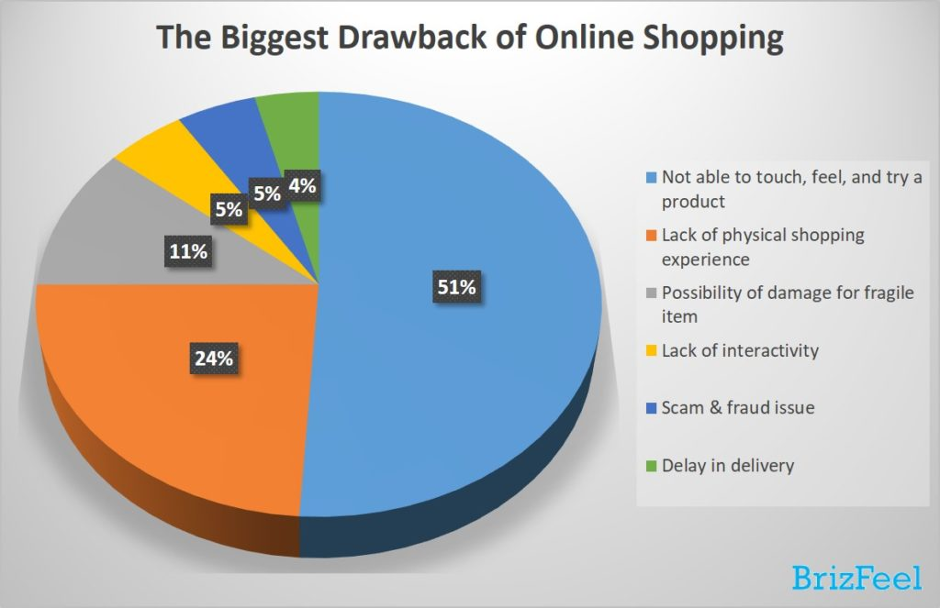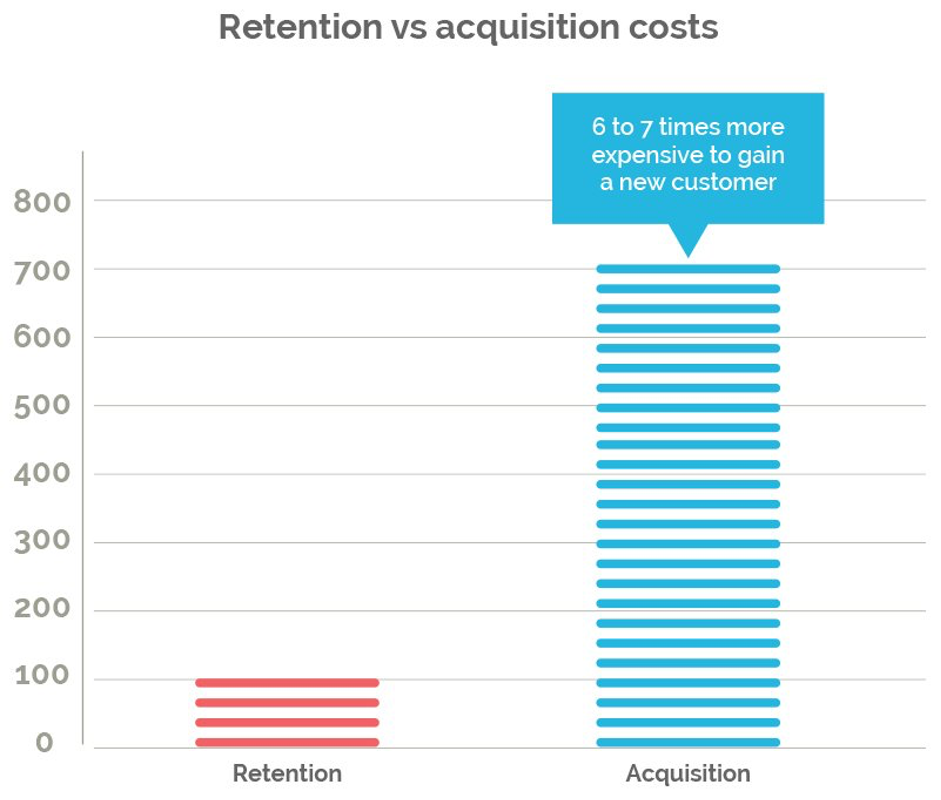Have you ever stopped to ask yourself how your customers feel after they’ve bought your product? Or do you stop delivering a tailored customer experience once the sale has been closed?
Either way, there might be room for improvement. Improving your customer experience is the first step towards increasing customer retention. Whether your next customer is looking for a new pair of shoes or human resource software with collaboration tools, improving the post-purchase customer experience should be on your list of priorities.
It’s not as hard as it sounds. Your customers want to know that you see them as more than another sale. Designing custom packaging, personalizing the experience, and rewarding loyalty can go a long way to enhance the experience.
What is Customer Experience?
Everyone thinks they know what they’re talking about when it comes to customer experience. And for the most part, everyone is right.
Acceptable customer service is the warm, smiley welcome we receive when we walk into a store. It’s the way the customer service team manages and deals with our problems. And it’s the user experience we have when we’re on a company’s website. So where do we draw the line?
When it comes to customer experience, we never draw the line. It’s our job to ensure our customers have an amazing experience with us from start to finish. We should always navigate customer experiences. This includes those that occur post-purchase.
Why is Customer Experience Important?
As a business, it’s your job to deliver an experience that a paying customer is happy with. If you’re not prioritizing your customer service and aiming to improve your customer experience, you’re already falling behind your competitors.
Last year, we saw customer experience overtook price and product.

For your business to grow, you need to deliver a good customer experience. Branding used to be all about graphic design and tone of voice. Now, it’s the way you interact with your customers that can set you apart from the rest.
With over three-quarters of people agreeing that they would pay more for a better customer experience, it’s time businesses started analyzing their model from the eyes of a customer.
This article will help you identify strengths and weaknesses in your customer experience journey. Using what you discover, you’ll be better equipped to deliver great customer service through collaboration moving forward.
What Does a Good Customer Experience Look Like?
Think about a brand that you love. One you frequently purchase from. Why do you keep going back to them?
One of the best ways to deliver a good customer experience is to make every customer feel important.
People don’t want to feel like just another number. That’s why personalization can go a long way. Sending happy birthday flyers, remembering people who have been on the site, and customizing order confirmation can all enhance the experience.
Little things like these give your business a leg up. They show that you care about the individual, not just the sale. This is an easy way to boost customer retention and keep people coming back.
But a lot of business owners get caught up in the early stages. Often, when trying to create the perfect customer experience, they focus their energy only on the hook. They want people to visit their store or website and fall in love with the brand immediately.
The post-purchase customer experience plays the same important role. If increasing sales and revenue is your goal, you need to build an army of loyal customers. This becomes even more important when you consider that up to 70% of all sales come from repeat purchasers.

What Happens Post-Purchase?
Once somebody has ordered something from your site or bought something in your store, what happens next?
Do you interact and engage with them, letting them know how to get in touch if they need you? Or do you leave them to it, perhaps emailing a discount code a few months down the line?
With customers expecting more from the experience that brands deliver, businesses surely have find ways out. Prioritizing the post-purchase customer experience may take some investment, but the rewards are worth it.
Here are five ways you can improve your customers’ post-purchase experience.
Get Your Return Policy Right
When it comes to shopping online, a lot of people are skeptical when trying new sites. One of the biggest drawbacks to online shopping is the inability to touch, feel, or try a product. Many people worry that an item might arrive damaged, and 5% of people are less trusting on unknown sites due to the fear of scams or potential fraud.

To minimize the negative effects, you need a beneficial return policy that makes customer feel comfortable with. Firstly, think about the length of your return policy. Make sure you factor in delivery time and prepare to be a bit lenient on this.
Secondly, make it easy to find. Don’t bury your returns policy in the footer on your website. Give every customer the ability to find it quickly and easily, without too much digging. Make use of virtual collaboration tools to keep track of returns and refunds so no customer is left waiting.
Finally, consider offering free shipping for returns. If a customer doesn’t like a product that they haven’t been able to see, touch, or feel then they probably want to return it. Offering this service free of charge will make them more willing to give you another shot.
Deliver More with Custom Packaging
Custom packaging can go a long way in enhancing your post-purchase customer experience. It looks great compared with standard brown cardboard boxes, which is an advantage in itself. However, custom packaging can do much more for your brand.
You can do whatever you want with the design, add personalized messages or encourage future engagement on social media networks.
It also adds excitement to the receiving an online order process. Cardboard boxes are boring, but custom-designed packaging makes it feel like the purchaser is receiving a gift.
Make Sure Your Customer Has Everything They Need
Part of the post-purchase customer experience is the product itself. It’s your job to make sure that every customer knows how to use their new product to the best of their abilities.
In a physical environment, this is much easier. Samsung is a good example of this. Whenever you buy a product at their store, they invite you to a group session where you can learn how to use the different features and functions. You can do this online as well.
Take advantage of a free online conference tool to host training and Q&A sessions for high-end products. For smaller items, ensure you send a complete description along with instructions or a guide with the product.
Reward Loyalty
Loyalty is essential for business growth. A returning customer is not only an advocate of your brand, but they are much more cost-effective. It’s up to seven times more expensive to gain a new customer than it is to retain one.

With all the money you’ll be saving, you can afford to reward your loyal customers with discount codes, surprise gifts, or something unexpected. This adds to the experience and shows that you see them as more than just another sale.
A good strategy is to keep an eye on your product lifecycle management software to see when your customer might be looking for an upgrade. A discount code or voucher will help bring them back to you.
Everybody wins. You get to keep growing a loyal army of advocates, and your returning customers get gifts for being part of your club. It’s a fool-proof solution to improving your post-purchase customer experience.
Say Thank You
Is there anything else you can send along with the product? Packaging inserts help you build a relationship with your customer, showing once again that you see them as more than just another sale.
This is a popular strategy for small businesses. Often they have more time as they have fewer orders coming in. But that doesn’t give larger companies an excuse! Personalized thank-you notes are created as easily as personalized emails. The tangible aspect makes them feel a bit more special.
Use bots to find out more about your customer. Finding out what else they were looking at or how they found you will help you personalize your message. What is a bot? It’s not scary, despite how it sounds! It simply tracks user behavior on your website so you can better tailor your communication.
A thank-you note adds a nice touch to any online order too. Consider adding sweets or a small gift as well. Give your customers a reason to smile when they unwrap their product. Handwritten notes are always a winner – the extra time they take is definitely worth it!
Time to Implement Your Post-Purchase Customer Experience Strategy
Now you know why the post-purchase customer experience is so important. You know it can help you build an army of loyal customers, who account for up to 70% of your sales. This is clearly important for any business desiring to grow.
The five steps we’ve covered in this guide are easy to implement. Some require nothing but time and patience, whereas others necessitate a small investment. All of these tactics are worthwhile if you are prioritizing your customer experience this year.
So what are you waiting for? It’s time to go and give your customers exactly what they want!

Elea is the SEO Content Optimization manager for RingCentral, the leader in global enterprise communication and collaboration solutions on the cloud. She has more than a decade’s worth of experience in on-page optimization, editorial production, and digital publishing. She spends her free time learning new things.